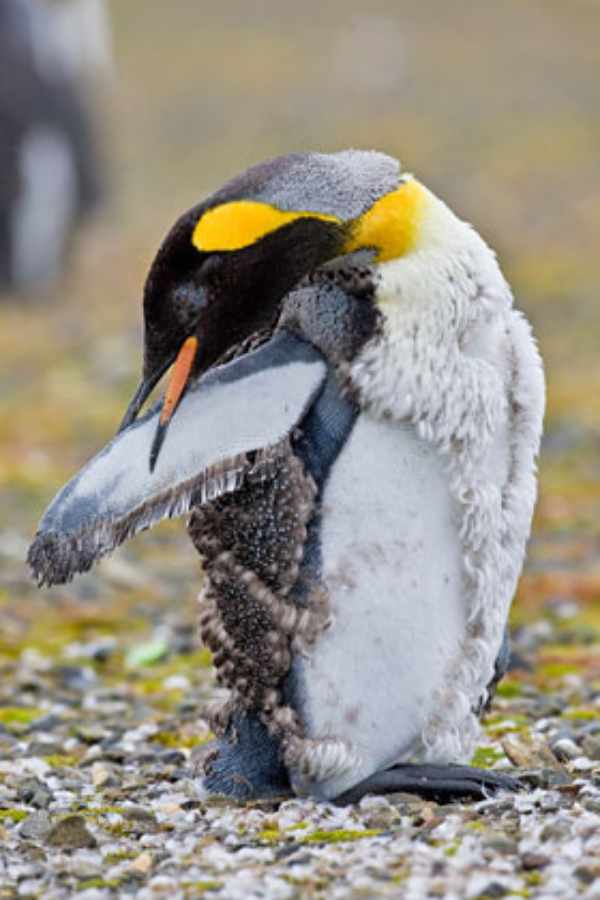Are animals really curious? The answer is a resounding yes! All creatures great and small have an innate sense of inquisitiveness, it’s just a matter of degree. Some creatures are more inquisitive than others, and we have compiled a list of our top 7 curious critters.
Table of Contents
From the brightly coloured clownfish to the brainy octopus, these creatures are always looking for something new to explore. But before we continue, it’s important to clarify what we mean by curiosity. It’s not just about being nosy, but rather an adventurous spirit that drives animals to seek out new experiences.
However, as the saying goes, curiosity killed the cat, and sometimes this inquisitiveness can lead to trouble. Nevertheless, we can’t help but admire these fascinating creatures for their insatiable thirst for knowledge.
Most Curious Animals
Cats

Cats have a reputation for being inquisitive creatures, and it’s not hard to see why. Those who have spent time around felines know that they’re not shy when it comes to investigating their surroundings. Whether it’s a friendly greeting or a playful swat at a piece of string, cats are always eager to engage with the world around them.
It’s this same curiosity that can sometimes get them into trouble, as anyone who’s had a cat knock over a trash can attest. But despite their mischievous tendencies, it’s hard not to be charmed by these endlessly entertaining creatures.
Puppies

Puppies are natural explorers, constantly on the lookout for new sights, smells, and textures to investigate. Their playful nature and adorable looks make them beloved pets, but their curiosity can also lead to chaos if not properly contained or house-trained. Puppies are especially drawn to colourful, textured, and moving objects, which are plentiful in most households.
They are also curious animals who are not afraid to approach strangers and other animals, eager to make new friends and sniff out their surroundings. Through their innate curiosity, puppies create mental maps of the world around them, building a foundation for lifelong learning and exploration.
Monkeys

Monkeys are one of the most fascinating creatures in the primate family. Their genetic makeup is so similar to that of human beings, making them highly intelligent creatures. They are known for their industrious nature which is displayed in their daily activities. One of the distinct characteristics of monkeys is their boldness and curiosity.
They are inquisitive creatures that like to explore their surroundings. This curiosity often leads them to interact with humans, where they can be seen opening bags and exploring the contents. Sometimes, they will climb onto people’s heads and backs or sit beside them to satisfy their curiosity.
Penguins

Penguins are fascinating creatures that have captured the attention of Tinseltown and nature lovers alike. From Happy Feet to March of the Penguins, these flightless birds have been the subjects of many movies and documentaries. No doubt, their black and white feathers give them a sharp, sophisticated look that mimics a tuxedo. Beyond their glamorous appearance, these curious creatures are also highly social animals. They live in communities, forming bonds and sharing resources. What’s more, penguins have a keen sense of smell that they use to detect and interact with their surroundings, including other penguins and curious humans.
Giraffes

Penguins are often the stars of nature documentaries and movies, captivating audiences with their adorable tuxedo-like feathers, community life, and curious personalities. While their black and white feathers are certainly eye-catching, it is their use of smell that truly sets them apart from other animals.
Penguins rely on their keen sense of smell to identify objects and individuals, as well as explore and navigate their environments. In fact, these waddling wonders have even been known to cautiously approach humans and investigate them with their noses.
Foxes

Foxes are fascinating creatures that share the same family as dogs, and their curiosity is deeply embedded in their genes. Their innate curiosity has allowed them to thrive in different environments and habitats, including urban areas. In these settings, foxes must be more cautious and nocturnal to survive.
Because of this, they have adapted to staying in the shadows and are more aggressive in order to protect themselves. Although the red fox may be the more common image associated with foxes, their ability to thrive in both the wild and urban environments is something to marvel at.
Bushbabies

Bushbabies, the elusive tree-dwelling primates of sub-Saharan Africa, maybe the last but certainly not the least curious animals on our list. With their large, round eyes and distinctive baby-like call, these nocturnal creatures rely heavily on their heightened senses of sound and smell to find prey and avoid predators.
But don’t let their calm and gentle demeanour fool you – bushbabies are also incredibly bold and curious. They have lightning-fast reflexes and are easily drawn to noise and movement. Whether you’re admiring them from afar or lucky enough to encounter one up close, bushbabies are truly fascinating creatures worth marvelling at.
FAQs
What animals are known for curiosity?
While it is often associated with humans, animals such as cats, dogs, and monkeys are also known for their curious nature.
What is the friendliest animal in the world?
Capybaras
Why are animals curious?
While most animals prioritize survival and reproduction, there are certain species that are simply fascinated by the world around them. These curious creatures go beyond simply searching for food and avoiding predators – they actively seek out new objects to investigate.
Are cats curious animals?
Yes
Final Words
Curiosity is a crucial trait among most animals as it helps them distinguish between friends and foes, as well as prey and predators. It also aids them in adapting to new environments and situations by developing new instincts to survive.
However, curiosity can sometimes lead to aggression when animals feel threatened or are caught in disputes over territories or resources. On the other hand, it is a powerful instinct that helps animals forage for food by identifying safe and harmful options.
Moreover, observing animal behaviour towards objects, other animals, and humans can be an indicator of their intelligence and personality beyond their scientific traits.
In conclusion, understanding the role of curiosity in the animal kingdom can provide valuable insights into their survival instincts, behaviours, and personalities.
Reference:
- https://www.bbc.co.uk/programmes/p06gcf9z
- https://sentientmedia.org/which-animals-are-most-intelligent/
- https://www.purina.co.uk/articles/dogs/behaviour/common-questions/why-are-dogs-so-loyal

Rahul M Suresh
Visiting the Zoo can be an exciting and educational experience for all involved. As a guide, I have the privilege of helping students and visitors alike to appreciate these animals in their natural habitat as well as introducing them to the various aspects of zoo life. I provide detailed information about the individual animals and their habitats, giving visitors an opportunity to understand each one more fully and appreciate them in a more intimate way.









